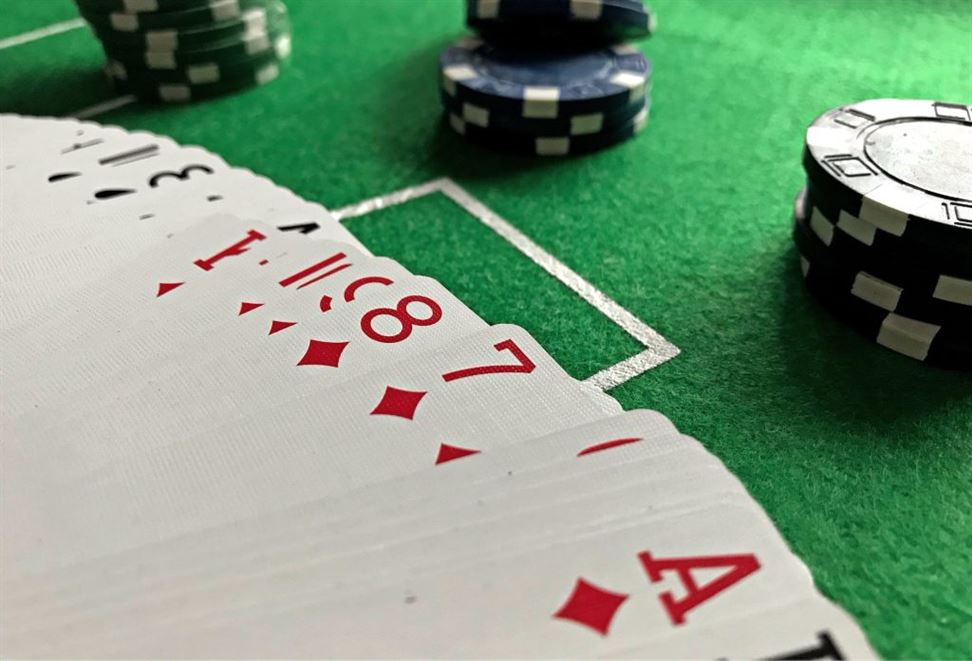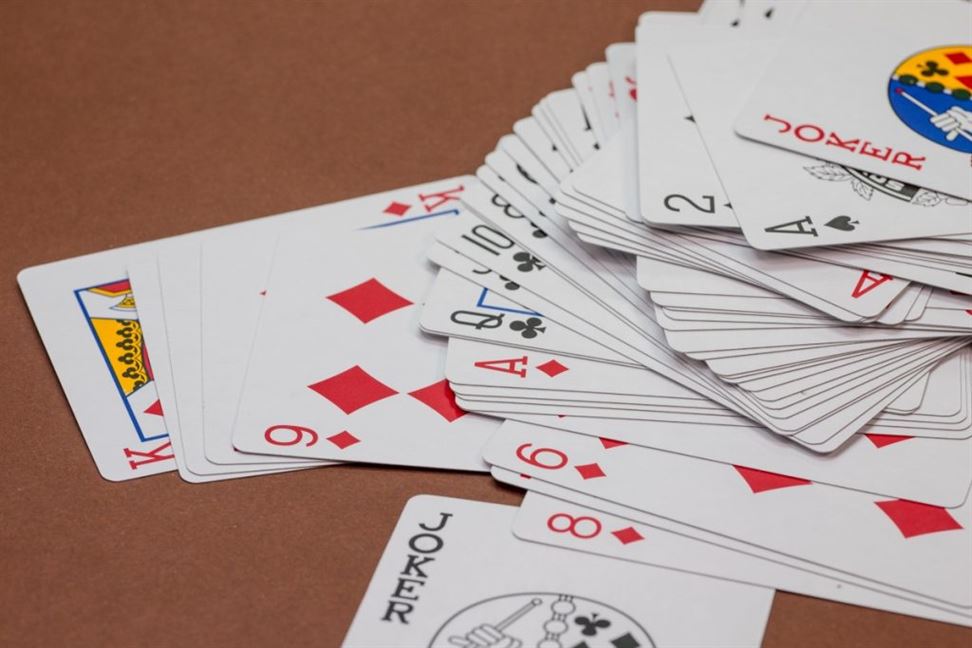Poker tournaments are a thrilling and competitive event that brings together skilled players from all around the world. The final table of a poker tournament is where the stakes are highest, and only the best players make it to this stage. To succeed at the final table, it is crucial to have a solid understanding of essential strategies for winning poker tournaments.
Essential Strategies for Winning Poker Tournaments
Firstly, one of the most important strategies is to play tight-aggressive. This means being selective about the hands you play but playing them aggressively when you do. By playing fewer hands, you minimize your risk of getting involved in unfavorable situations. Additionally, by playing aggressively, you put pressure on your opponents and force them to make difficult decisions. This strategy can help you accumulate chips and maintain control of the game.
Another key strategy is to be aware of your position at the table. Your position determines the order in which you act during each betting round. Being in late position gives you a significant advantage as you have more information about your opponents’ actions before making your decision. In contrast, being in early position puts you at a disadvantage as you must act without knowing how other players will proceed. Understanding and utilizing position effectively can give you an edge over your opponents.
Furthermore, managing your bankroll is essential for long-term success in poker tournaments. It is crucial to set limits on how much money you are willing to invest in a tournament and stick to those limits. Going on tilt or chasing losses can lead to poor decision-making and ultimately result in losing more money. A disciplined approach to bankroll management ensures that you remain focused and avoid unnecessary risks.
Additionally, reading your opponents and adjusting your play accordingly is a vital skill for success at the final table. Pay attention to their betting patterns, body language, and any other cues that may reveal information about their hand strength. Adapt your strategy based on these observations to exploit weaknesses and capitalize on opportunities. Flexibility and adaptability are key in poker tournaments, as the dynamics of the game can change rapidly.
Moreover, understanding pot odds and expected value is crucial for making informed decisions during a tournament. Pot odds refer to the ratio of the current size of the pot to the cost of a contemplated call. By comparing the pot odds to the odds of completing your hand, you can determine whether it is profitable to continue playing. Expected value takes into account both the probability of winning a hand and the potential payout. Making decisions based on these calculations increases your chances of long-term profitability.
Lastly, maintaining focus and composure throughout the final table is paramount. The pressure and intensity of the situation can be overwhelming, leading to impulsive decisions and costly mistakes. Take breaks when necessary, stay calm, and trust in your abilities. Confidence in your skills and decision-making will help you navigate through challenging situations and increase your chances of success.
In conclusion, winning at the final table of a poker tournament requires a combination of skill, strategy, and mental fortitude. Playing tight-aggressive, understanding position, managing your bankroll, reading opponents, calculating pot odds and expected value, and staying focused are all essential strategies for achieving success. By implementing these strategies, you can increase your chances of emerging victorious in poker tournaments and enjoy the thrill of triumphing at the final table.
Mastering the Art of Bluffing in Poker Tournaments
Poker tournaments are not only about having a good hand; they also require players to possess the skill of bluffing. Bluffing is an essential strategy that can help you win big pots even when your cards are less than ideal. However, it is important to remember that bluffing should be used sparingly and strategically. In this article, we will explore some effective strategies for successfully bluffing in poker tournaments.
First and foremost, timing is crucial when it comes to bluffing. It is essential to choose the right moment to execute a bluff. Bluffing too frequently or at inappropriate times can lead to disaster. The best time to bluff is when you have established a tight image at the table. This means that you have been playing conservatively and showing strong hands. When other players perceive you as a tight player, they are more likely to fold when you make a big bet, allowing you to take down the pot without having a winning hand.
Another key factor in successful bluffing is reading your opponents’ body language and betting patterns. Pay close attention to how your opponents react during the game. Are they nervous? Do they hesitate before making a decision? These signs may indicate that they are unsure about their hand and can be easily bluffed. Additionally, observe their betting patterns. If they tend to bet aggressively when they have a strong hand but become passive when their cards are weak, you can use this information to your advantage by bluffing when they show signs of weakness.
Furthermore, it is important to consider the size of your bluff. A successful bluff requires a well-calculated bet that is large enough to convince your opponents that you have a strong hand. However, it should also be within your bankroll limits, as going all-in on a bluff can be risky. The size of your bet should reflect the strength of your hand and the image you have created at the table. If your opponents perceive you as a tight player, a large bet will likely scare them off and secure you the pot.
In addition to timing and sizing, another effective bluffing strategy is the semi-bluff. A semi-bluff involves betting with a hand that has potential but is not yet a winning hand. For example, if you have four cards to a flush, you can make a significant bet to represent that you already have a flush. This puts pressure on your opponents and increases the chances of them folding. Even if you do not hit your flush on the next card, you still have the opportunity to improve your hand or potentially win the pot through further bluffing.
Finally, it is crucial to maintain consistency in your bluffing strategy. If you only bluff when you have weak hands, observant players will catch on and call your bluffs more frequently. To avoid this, mix up your play by occasionally bluffing with strong hands as well. This unpredictability will keep your opponents guessing and increase your chances of successfully bluffing.
In conclusion, mastering the art of bluffing is an essential skill for success in poker tournaments. Timing, reading your opponents, sizing your bets appropriately, utilizing semi-bluffs, and maintaining consistency are all key strategies to employ when bluffing. However, it is important to remember that bluffing should be used sparingly and strategically. With practice and experience, you can become a formidable bluffer and greatly enhance your chances of triumphing at the final table.
Analyzing Opponents: Key to Success in Poker Tournaments
In the exhilarating world of poker tournaments, understanding your opponents is crucial to achieving success. While luck certainly plays a role in this game of skill and strategy, it is the ability to analyze and decipher your opponents’ playing styles that can truly give you an edge.
One of the first steps in analyzing your opponents is observing their betting patterns. Pay close attention to how they bet during different stages of the tournament. Are they aggressive or conservative? Do they bluff often or only when they have a strong hand? By taking note of these patterns, you can begin to form a mental profile of each player at your table.
Another aspect to consider is body language. Although online poker has become increasingly popular, many players still participate in live tournaments where physical cues can be observed. Watch for any signs of nervousness, such as fidgeting or increased heart rate. These could indicate a weak hand or uncertainty about the current situation. On the other hand, a calm and composed demeanor may suggest confidence in their cards.
Furthermore, it is important to study your opponents’ reactions to previous hands. Did they show disappointment after losing a hand? Or did they remain unfazed? Understanding how they emotionally respond to wins and losses can provide valuable insight into their overall mindset and approach to the game.
Additionally, take note of how your opponents interact with others at the table. Are they engaging in conversation or remaining silent? Are they trying to establish dominance or maintain a low profile? These social dynamics can reveal clues about their personality and playing style. For example, a talkative player may be more likely to bluff, while a quiet one might have a more calculated approach.
Equally important is assessing the skill level of your opponents. Are they seasoned professionals or novices? This information can help you determine their level of expertise and adjust your own strategy accordingly. Against skilled players, it may be necessary to tighten your game and avoid risky plays. Conversely, when facing inexperienced opponents, taking calculated risks can often yield profitable results.
Lastly, be aware of any changes in your opponents’ behavior as the tournament progresses. Some players may become more aggressive when they are short-stacked and desperate for a win, while others may become more cautious as the stakes get higher. Adjusting your strategy based on these evolving dynamics is key to staying one step ahead.
In conclusion, analyzing your opponents is a fundamental aspect of achieving success in poker tournaments. By observing their betting patterns, body language, emotional reactions, social interactions, skill level, and adapting to changing circumstances, you can gain valuable insights that will inform your own decision-making process. Remember, poker is not solely about the cards you hold but also about understanding the people sitting across from you at the table. So next time you find yourself in a high-stakes tournament, take the time to study your opponents and use this knowledge to your advantage. Good luck!
Bankroll Management Tips for Poker Tournament Players
When it comes to playing poker tournaments, one of the most crucial aspects that players often overlook is bankroll management. Many players dive into tournaments without a clear understanding of how much money they can afford to lose or how much they should be investing in each tournament. In this section, we will discuss some essential bankroll management tips that every poker tournament player should consider.
First and foremost, it is vital to establish a dedicated bankroll specifically for poker tournaments. This bankroll should be separate from your regular cash game bankroll and other personal finances. By having a dedicated bankroll, you can better track your wins and losses and make more informed decisions about which tournaments to enter and at what stakes.
Next, it is crucial to determine an appropriate buy-in level for your bankroll. As a general rule of thumb, many professional players recommend keeping at least 50-100 buy-ins in your bankroll to weather the inevitable ups and downs of tournament play. For example, if you have a $1,000 bankroll, you may want to stick to tournaments with buy-ins no greater than $10-$20.
In addition to determining an appropriate buy-in level, it is also important to set stop-loss limits for yourself. A stop-loss limit is the maximum amount of money you are willing to lose in a single tournament or session. By setting these limits, you can protect yourself from excessive losses and prevent emotional decision-making when faced with a losing streak.
Furthermore, managing your bankroll effectively means being disciplined with your spending. It can be tempting to chase big prize pools and enter high-stakes tournaments, but if your bankroll does not support it, you risk going broke quickly. Instead, focus on building your bankroll steadily by consistently entering tournaments within your means. Remember, slow and steady wins the race.
Another key aspect of bankroll management is proper record keeping. Keeping detailed records of your wins and losses allows you to assess your performance over time and identify any leaks in your game. By analyzing your results, you can make adjustments to your strategy or seek guidance from more experienced players to improve your overall performance.
Lastly, it is crucial to remain disciplined with your bankroll management plan. Avoid the temptation to go on tilt and chase losses by playing higher stakes than you can afford. Stick to your predetermined buy-in levels and stop-loss limits, even if you are experiencing a winning streak. Discipline is essential for long-term success in poker tournaments.
In conclusion, bankroll management is a critical aspect of playing poker tournaments successfully. Establishing a dedicated bankroll, setting appropriate buy-in levels, determining stop-loss limits, and maintaining discipline are all key components of effective bankroll management. By following these tips, you can protect yourself from excessive losses, make more informed decisions about which tournaments to enter, and increase your chances of long-term success in the world of poker tournaments. Remember, managing your bankroll is not only about money; it is about managing your emotions and making rational decisions that will ultimately lead to triumph at the final table.
Mental Toughness: A Crucial Factor in Poker Tournament Success
When it comes to poker tournaments, mental toughness is a crucial factor that can make or break a player’s success. While having a solid understanding of the game and employing strategic moves are important, it is the ability to maintain focus, control emotions, and make calculated decisions under pressure that truly sets apart the winners from the rest.
One of the key aspects of mental toughness is maintaining focus throughout the tournament. With so many distractions and variables at play, it is easy for even the most skilled players to lose their concentration. However, successful players understand the importance of staying present in every hand and being aware of their opponents’ actions. They resist the temptation to get distracted by external factors and remain fully engaged in the game.
In addition to focus, controlling emotions is another vital component of mental toughness. Poker can be an emotional rollercoaster, with highs and lows that can easily sway a player’s judgment. Successful players have learned to keep their emotions in check, whether they are experiencing a winning streak or facing a devastating loss. They understand that making decisions based on emotions rather than logic can lead to costly mistakes and ultimately affect their overall performance.
To develop this emotional control, many professional players use techniques such as deep breathing exercises or visualization to stay calm and composed. By taking a moment to collect themselves before each decision, they are able to approach the game with a clear mind and make rational choices that are not influenced by temporary emotional states.
Moreover, mental toughness requires making calculated decisions under pressure. As the stakes get higher and the competition intensifies, it becomes increasingly important to think strategically and weigh the potential risks and rewards of each move. Successful players do not let the pressure get to them; instead, they embrace it as an opportunity to showcase their skills and outwit their opponents.
To enhance their decision-making abilities, top players often analyze past games and learn from their mistakes. They constantly seek to improve their strategies and adapt to different playing styles, thereby increasing their chances of success in future tournaments.
Furthermore, mental toughness also involves resilience in the face of setbacks. In poker, even the best players can experience a series of bad beats or unfortunate circumstances that may seem insurmountable. However, instead of dwelling on these setbacks, mentally tough players view them as temporary obstacles that they can overcome with perseverance and determination.
They understand that staying focused and maintaining confidence despite setbacks is crucial for long-term success. By learning from each defeat and using it as an opportunity for growth, mentally tough players are able to bounce back stronger and more resilient than ever.
In conclusion, mental toughness plays a vital role in achieving success in poker tournaments. Maintaining focus, controlling emotions, making calculated decisions under pressure, and displaying resilience are all key elements that contribute to a player’s overall performance. While technical skills and knowledge of the game are important, it is the ability to stay mentally strong throughout the tournament that truly sets apart the winners. By cultivating mental toughness, aspiring players can increase their chances of triumphing at the final table and reaching new heights in their poker careers.




